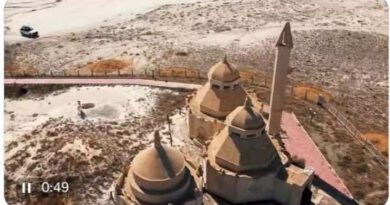Masterpieces of Iranian needlework
The vast land of Persia is home to many hand-made artefacts referred to as traditional crafts. Every region and even city has its own traditional crafts, many of which have been registered nationally as intangible heritages. Among them, one can refer to Lak Tarshi (a special type of wood carving), Termeh Bafi (a type of Iranian handwoven cloth), Toreutics (artistic metalworking), Persian rug and many more, the latter has also been registered in UNESCO Intangible Cultural Heritage List.
The vast land of Persia is home to many hand-made artefacts referred to as traditional crafts. Every region and even city has its own traditional crafts, many of which have been registered nationally as intangible heritages. Among them, one can refer to Lak Tarshi (a special type of wood carving), Termeh Bafi (a type of Iranian handwoven cloth), Toreutics (artistic metalworking), Persian rug and many more, the latter has also been registered in UNESCO Intangible Cultural Heritage List.
While many Iranian handicrafts are nationally produced and can be found all over the country, some of them are found in their best quality in a special region or city. So, it is important to know the handicrafts destination in Iran in order to be able to buy the best quality products with the best prices. Given the wide range of handicrafts produced by Iranian artists, every city has its own special crafts; for example, Yazd is famous for its Termeh, Tabriz for its handwoven Rugs, Malayer for its woodcarving, Sistan-o-Baloochestan for its embroidery, etc.
For a list of top Iranian handicrafts, you can refer to this shortlist.

Vitreous Enamel
Vitreous Enamel (enamel painting) refers to the art of painting copper items using glazed colors. The color is stabilized by baking the item. Enamel painting is popular in Isfahan. Vitreous enamel is a handicraft art and the artist must be skilled in painting Iranian and Islamic designs, geometric patterns, Xatay designs, animal and flora designs, etc. on copper items. The artist must be able to glaze paint, bake the items, finish the works, etc.
Khatam-kari
Khātam is an ancient Persian technique of inlaying mostly popular in Isfahan and Fars Provinces. It is a version of marquetry where art forms are made by decorating the surface of wooden articles with delicate pieces of wood, bone and metal precisely-cut intricate geometric patterns. Khatam-kari refers to the art of crafting a khatam. Common materials used in the construction of inlaid articles are gold, silver, brass, aluminum and twisted wire.

Firoozeh-Koobi
Firoozeh-Koobi (Turquoise-ramming) is a stone handicraft field that is conducted by inlaying small pieces of turquoise in a mosaic pattern on utensils, jewelry, decorative items, etc. A special type of dark-colored lacquer is used between the turquoise pieces. The lesser the space between the turquoise pieces, the quality is higher. This art is popular in Isfahan.

Ahrami-baafi
Ahrami-baafi (weaving Sajadeh, a kind of praying cloth) is the art of weaving a kilim-like fabric using wool and cotton threads by a traditional weaving machine. The final product is usually 70´90cm, but its length can also be up to 3 meters.

Shiriki Pich
Shiriki Pich is the local name for Handmade Kilims of Sirjan and Baft in Kerman Province that is hand woven and offers a good balance of durability and beauty. Due to the precise construction techniques used by the artists, kilims can last for years to be produced. The material used is natural wool that make this kind of rugs not only so soft and comfortable but also valuable.

Over-glaze Painting
Over-glaze painting refers to the art of painting traditional patterns on clay pottery. The painting is done after the clay is baked and glazed. After painting, the product is glazed and baked for the second time

Glass Enamel
Glass Enamel refers to the technique of painting on glass bodies using brushes and enamel glazes. In order to stabilize the glazes and paints, the final work must be baked in 350 to 550°C. A glass painter is a person who has artistic taste and can recognize glass glazes, combine different solvents, use brushes for designing and painting, and regulate the furnace to bake the products.




